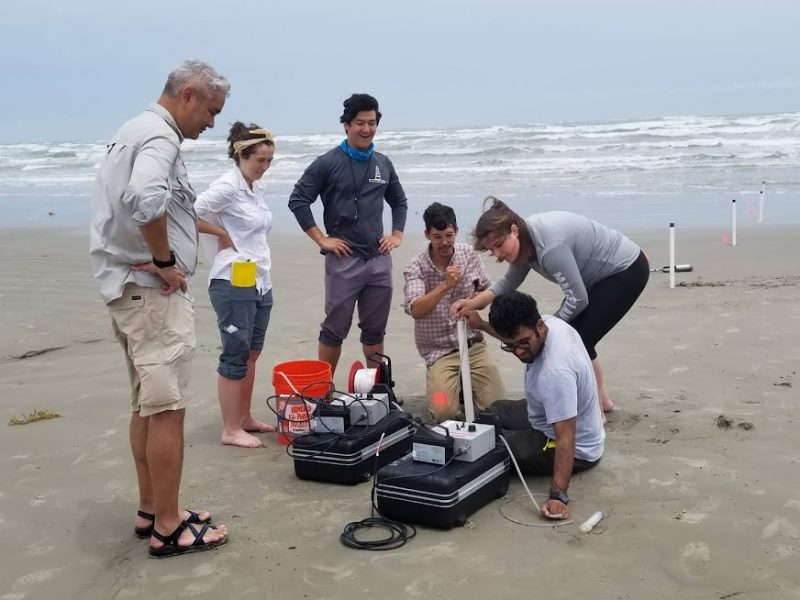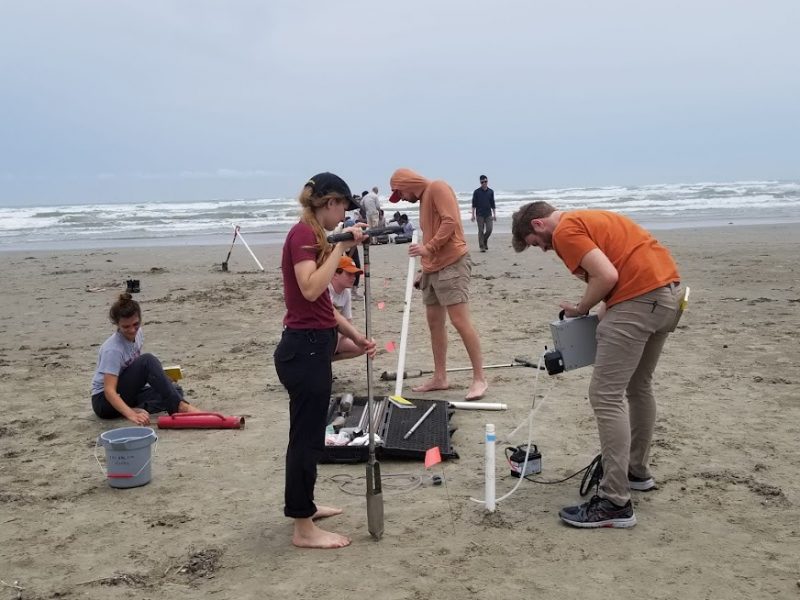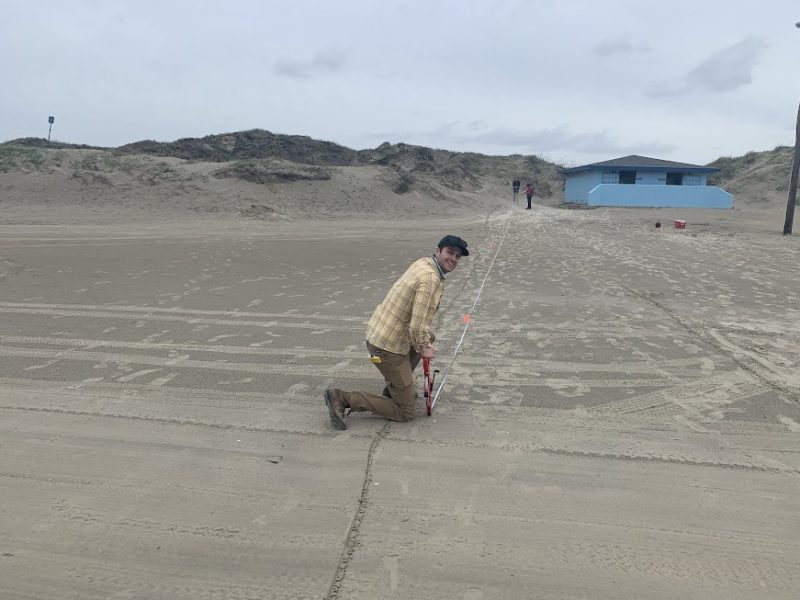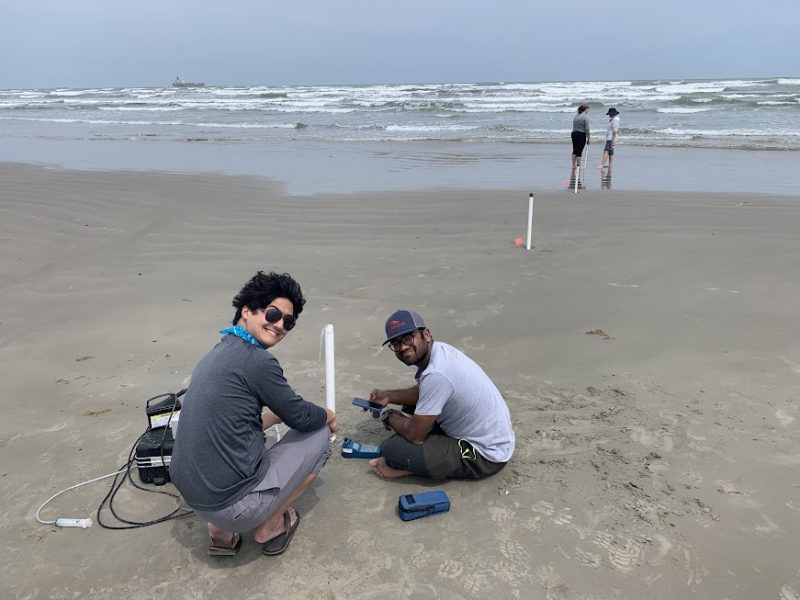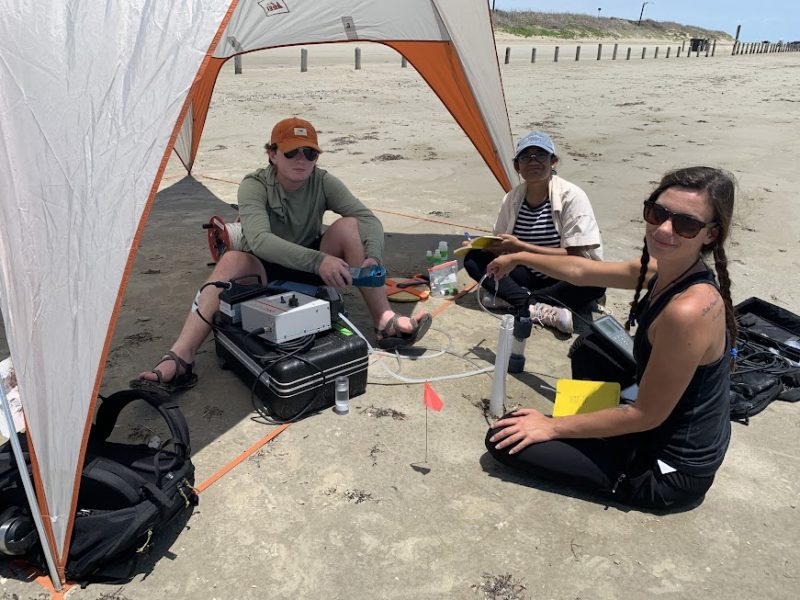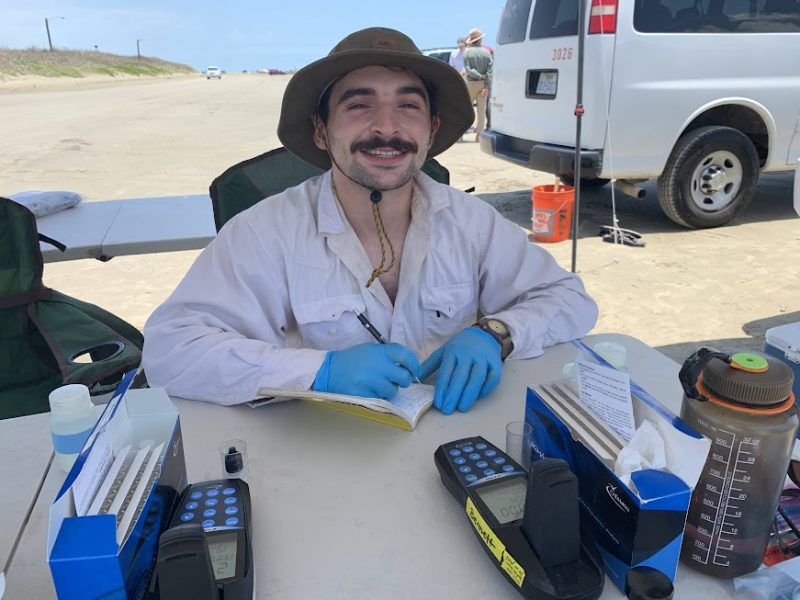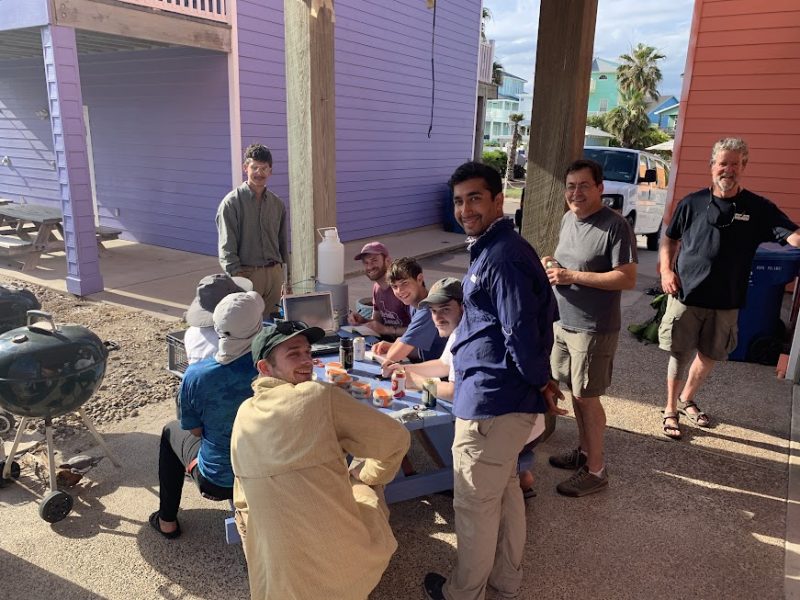Data Points: Hydro Field Camp Blog Part 2!
June 5, 2022
This is the second blog post in a series covering the 2022 Hydrogeology Field Camp at the University of Texas at Austin. The observations are by Neelarun Mukherjee, a graduate student working towards his doctorate under the supervision of Dr. Bayani Cardenas, a faculty member in the Department of Geological Sciences who is credited with the photos. Read the next blog post here.
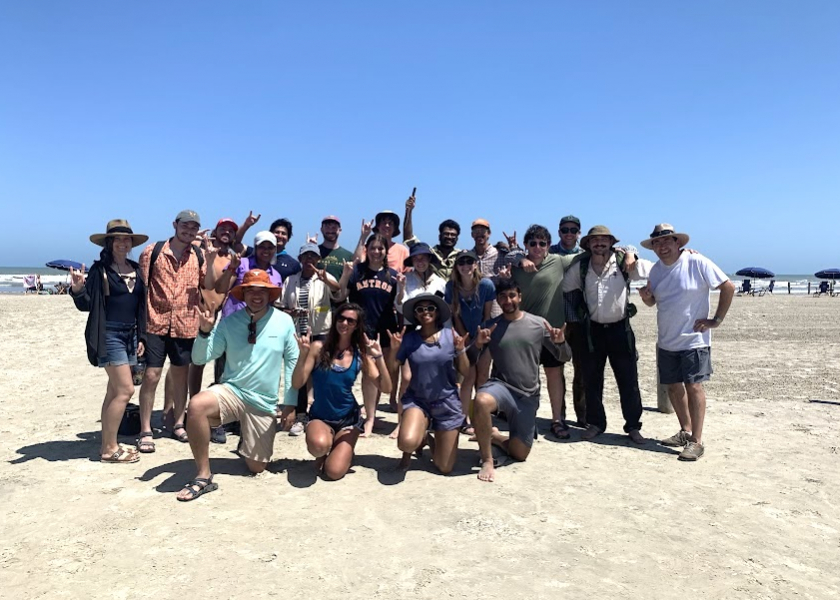
PORT ARANSAS (Early June 2022)—We began the second week of the 2022 Hydro Field Camp at Port Aransas, city on Mustang Island off of the Texas coast. The Central Texas coast that borders the Gulf of Mexico is a low-energy, low-tidal range region that is constantly changing as a result of active coastal processes that are directly linked to meteorological events. In fact, we experienced severe weather while on Mustang Island: on the very first day on the field, there were very high winds as well as a very high water level. Since this region is a very flat barrier island, we expected to observe some very interesting hydrological processes in the subsurface.
This portion of the field camp was very independent since by this week all of the students learned how to work with all the equipment (see the first blog post). On reaching the beach, we divided into four groups, decided what scientific questions to investigate, and outlined a transect from the sea inland (on the beach), installing 20 piezometers, or tubes that act as wells from the surface to below the water table.
Because we were investigating saline water-freshwater interaction, it was important to understand the chemical properties in each of the wells. We got expert guidance from Dr. Phil Bennett, Anna Turetcaia, and Will Nguyen, who came to visit us to help with the sampling and testing of the water samples from each of the wells. Nguyen is a grad student who collected samples from us and took them back to Austin to run chemical sampling tests and provide the class with the results. The class appreciates Will’s help a lot in analyzing the chemical species.
Other than rigorous chemical tests, we also learned how to perform Slug and Ksat tests on the wells to understand the transport properties of the subsurface. Overall, the hydrology of the coastal region is very complicated because of the dynamics of the tide and the weather. To get a better idea of the subsurface, we performed electrical resistivity tomography (using an 8-channel SuperSting model from Advanced Geosciences Inc., which is a company based in Austin TX) along and perpendicular to the transect to locate the mixing zone.
Dr. John M. (Jack) Sharp, Emeritus Professor of the Department of Geological Sciences, also visited the Hydro Field Camp to inspire us about the field of hydrology and our future prospects. He began the Hydro Field Camp years ago and was one of the first instructors. Overall, the second week of this camp was a great experience for all of the undergrad and grad students.
